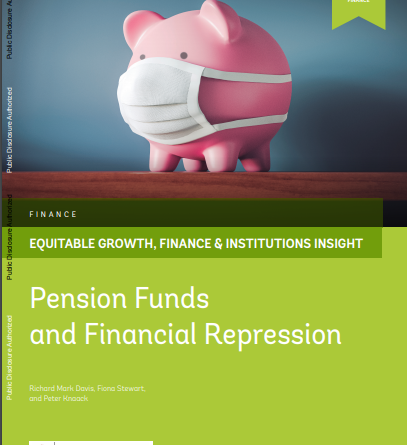Pension Funds and Financial Repression
By Richard Mark Davis, Fiona Stewart, Peter Knaack
Pension funds in some economies are used as a captive audience to channel capital at below market rates to government. This policy is only one tool in the financial repression toolkit, but it is receiving increased attention as governments around the world struggle to increase fiscal space and reduce their sovereign debt burden as they rebuild their economies after the pandemic.
First, this paper provides an analysis of financial repression using pension funds from a historical perspective. It then assesses the welfare and distributional implications of this policy and distills lessons learned from a variety of advanced and emerging economies. The wide range of possible interventions and idiosyncratic country conditions make a general set of policy recommendations elusive, but the paper suggests four high-level principles that can help policymakers assess the costs and benefits of implementing policies that employ pension funds as a captive audience for financial repression.
Source: World Bank











